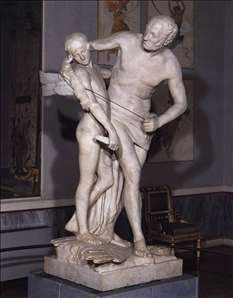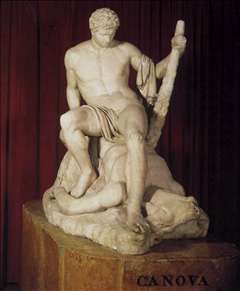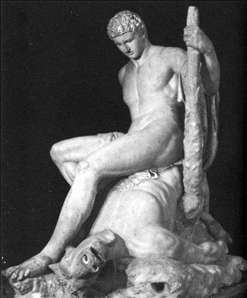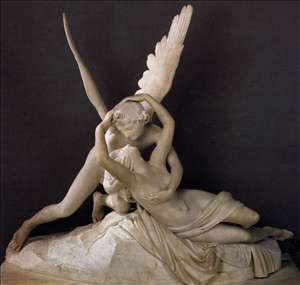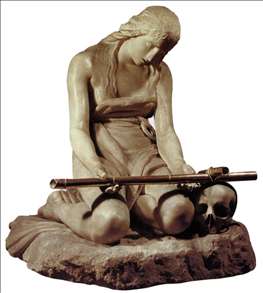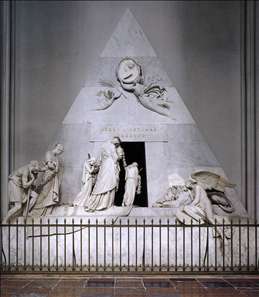Italian sculptor. He was the most successful and the most influential sculptor of the Neoclassical movement, outdoing even
Thorvaldsen and
Flaxman in international fame and prestige. Born in Possagno, near Treviso, the son of a stonemason, he became assistant to a local sculptor and moved with him to Venice in 1768.
His early work is lively and naturalistic (Daedalus and Icarus, Museo Correr, Venice, 1779), but after he settled in Rome in 1781 his style became graver and thoroughly imbued with antique influence. Theseus and the Minotaur (Victoria and Albert Museum, London, 1781-3) was his first major work in Rome, and he soon followed this with the prestigious commission for the tomb of Pope Clement XIV in SS. Apostoli (1783-87). Roman sculptors were not at all happy that the choice should fall to a young sculptor who was not yet well known and came from outside Rome. Nevertheless, when the monument was revealed to public admiration, the reaction was enthusiastic. The solution was so successful that Canova used it once more in his tomb of Clement XIII in St. Peter s between 1784 and 1792. Here, too, Berninian references are not lacking, as in the figure of the pope, but the overall setting places the whole amongst the finest works of Neoclassical in general, not just in Rome. After this Canova never looked back. He ran a large studio and worked for a galaxy of European notables, including Napoleon (who tried unsuccessfully to bring him to Paris), the Duke of Wellington, and Catherine the Great of Russia; his portrait of Napoleon s sister (Paulina Borghese as Venus, Borghese Gallery, Rome, 1805-07) is one of his most celebrated works, a marble equivalent to David s Madame Rcamier.
Canova worked much for the papal court and in 1815 he became the Pope s representative in recovering works of art looted by Napoleon; on his visits to Paris and London he was feted. In 1816 he was created Marchese d Ischia by the Pope and he retired to Possagno, where he built a studio that is now a museum devoted to him. Canova was immensely influential and was renowned for his generosity to young sculptors. He went out of favour during the Romantic period, when his work seemed cold and static, but his reputation has greatly revived in the 20th century. His work, in fact, was always much more individual than that of many of his Neoclassical contemporaries and he placed great importance on the personal handling of his material.
